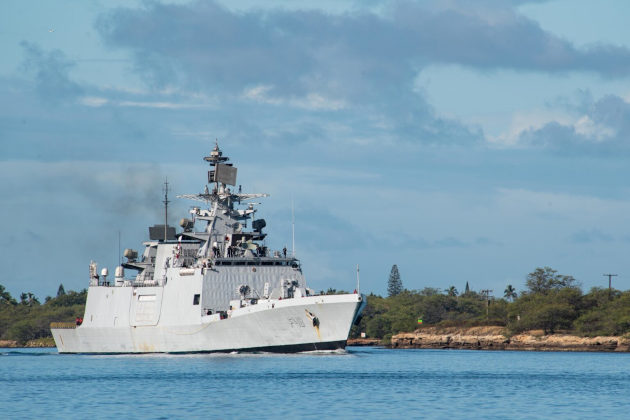Rising Tensions: India and Pakistan on High Alert Following Kashmir Killings
Following the recent killings of two dozen tourists in Kashmir, India and Pakistan are on high military alert, exchanging accusations and sanctions. India believes that Pakistan sponsored the attacks through its long-standing support of the terrorist group Lashkar-e-Taiba, with a splinter group, the Resistance Front, claiming responsibility. In response, India launched a “focused, measured, and non-escalatory” operation targeting nine sites of “terrorist infrastructure” in Pakistan.
Both countries claim Kashmir, which India administers, and significant troop deployments, including special forces, are positioned along the disputed border. Agreements on trade and shipping have been violated, and a crucial water treaty has been suspended. Efforts by the US and China to de-escalate the situation have been unsuccessful.

Source: US Navy
Leaders from both nuclear-armed nations are intensifying tensions. The chief of the Pakistani army, General Syed Asim Munir, warned that any attack from India would be met with a swift and decisive response.
The situation raises questions about the potential for wider military conflict. India has various options for retaliation that do not involve full-scale combat, including cyberattacks on critical infrastructure, special forces operations against perceived terrorist groups, precision airstrikes, or artillery barrages along the border. However, the use of nuclear weapons is not considered likely, as both nations maintain secure and mutually deterring arsenals.
A concern is the possibility of the conflict extending to maritime areas. The Indian Ocean offers numerous opportunities for naval engagement, which both nations might view as less escalatory since it could avoid civilian casualties and media scrutiny. However, military confrontations at sea can escalate quickly, and naval brinkmanship could lead to broader conflict.
The Indian navy is robust, with two aircraft carriers, numerous surface ships, 16 attack submarines, and over 70,000 personnel. It also operates long-range surveillance aircraft and various combat aircraft. In contrast, Pakistan’s navy is smaller, with around 30 000 sailors and a focus on coastal operations, but it is supported by China and Turkey, boasting a growing submarine fleet and several warships.
Recent developments include the arrival of a Turkish warship in Karachi and reports of Turkish military supplies landing in Pakistan, signaling Turkey’s support for Pakistan, with China likely to align with Islamabad as well.
The Indian navy is expected to conduct aggressive patrols off Karachi, Pakistan’s largest city. While an unprovoked attack on the Pakistani navy is unlikely, any show of force by India could provoke a response from Pakistan, potentially leading to a dangerous maritime standoff.
The situation could mirror the Cold War tensions depicted in the novel “The Bedford Incident,” where US and Soviet naval forces clash with disastrous consequences. A similar scenario, albeit on a smaller scale, could unfold in the northern Indian Ocean, with the US Navy’s Indo-Pacific Command caught in the middle. Both India and Pakistan should strive to avoid escalating tensions not only in Kashmir but also across the Indian Ocean.

